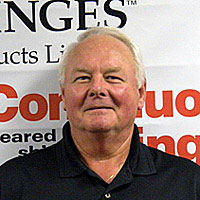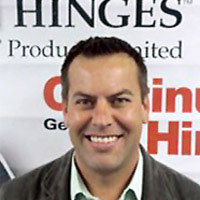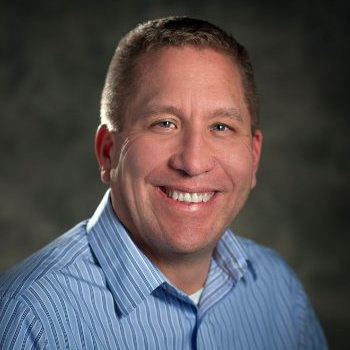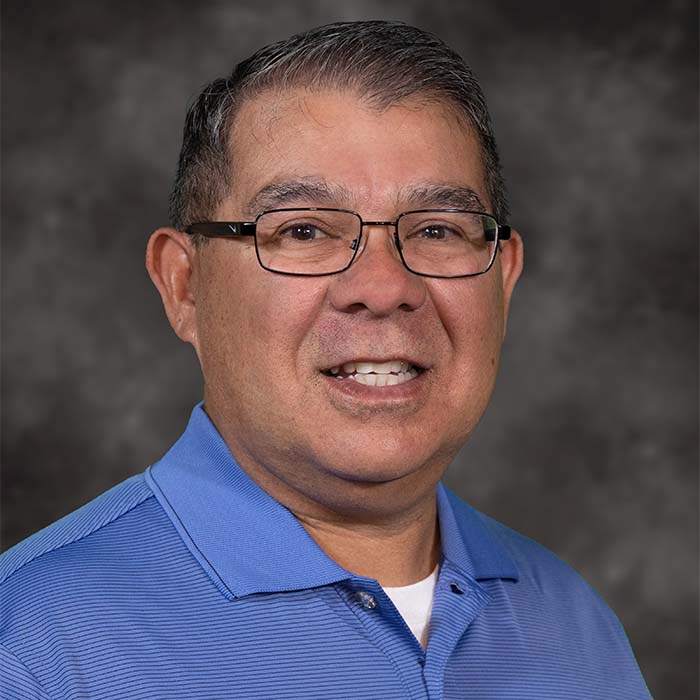One of the tragic ways patients, inmates or students seriously harm themselves is by hanging from objects hooked over door hardware. To help facilities make their doors safer, SELECT invented the TIPIT® ligature-resistant hospital tip. This low-cost, angle-cut tip covers the top surface of most brands of geared continuous door hinges so objects can't be hung over them. Recently, our inventor Timothy A. Schau, was awarded U.S. Patent Number 8,898,861 for his innovative design.
So do you or someone you know have an idea that would make your facility safer? Your job easier? Our lives more enjoyable? If it's a new and useful idea, then, like the TIPIT it has patent potential. You don't need an attorney to get a patent. In fact, when you go to the U.S. Patent and Trademark Office (USPTO) site you'll see the process is similar to following a recipe. Here's a quick overview of the process we followed.
What is a patent?
A U.S. patent is a property right granted by the U.S. Patent and Trademark Office (USPTO) to the inventor(s) that gives "the right to exclude others from making, using, offering for sale, or selling or 'importing' the invention into the United States." The U.S. patent for the TIPIT is good for 20 years.
How do you patent an idea?
Document every step of the way. From day one of your idea, start a notebook (handwritten or digital). Describe and diagram every aspect of your invention or innovative process — explain when and how you came up with the idea, what it does, how it does it and any modifications you make along the way. Sign and date each notebook entry. If it's appropriate, build and test a prototype, documenting that as well.
Confirm your invention qualifies for a patent. The USPTO does not patent mere ideas or suggestions. You have to show that your invention is new, that it wasn't sold before you applied for the patent and that it works.
There are three types of patents you can apply for:
Utility patents. These are the most common patents received. They are granted to a person (or persons) who invent or discover a new and useful process, machine, manufactured article, composition of matter (such as new chemical compounds or mixtures of ingredients) or any new, useful improvement.
Design patents. These are granted to anyone who invents a new, original and ornamental design for an article that can be manufactured.
Plant patents. You can also get a patent for inventing or discovering and asexually reproducing any new and distinct variety of plant.
Make sure your invention has commercial potential. It costs approximately $1,500 in fees to file and obtain a patent from the USPTO (and that doesn't include any possible legal or professional patent drawing fees). So do some market research to prove it's a good business decision.
Conduct a thorough patent search. There are a lot of inventions out there and it's important to make sure your idea really is new. You can do the research or hire someone to do it for you. Start by researching U.S. (and sometimes foreign) patents. Check scientific and technical journals. You can do most of this research online at no cost at uspto.gov. In addition, you may want to visit a Patent and Trademark Resource Center where you can get help from a librarian.
In your search, you'll probably find inventions that are similar to yours. When you do your documentation (Step 1), indicate how your invention is different or improves on the earlier patented inventions.
Finally, prepare and file your application. You can initially file a provisional patent application (PPA). This is not an application for the patent, but allows you to say, as SELECT initially did, that a patent is pending. You'll need to give a detailed description of your invention and provide a rough drawing. The PPA application fee ranges from $65 to $260 depending on the size of your company. Once you file a PPA you have one year to submit a regular patent application (RPA). Because SELECT took this route for the TIPIT it took 18 months from start to finish to get the actual patent.
Or you can skip the PPA and file directly for the RPA.Do you have an idea that would make doors safer? A hinge design improvement you'd like to see?
Do you need an engineer to make it happen? Let's talk.






